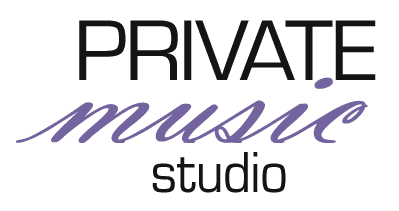10 Tips To Make Virtual Lessons FUN!
February 2, 2021
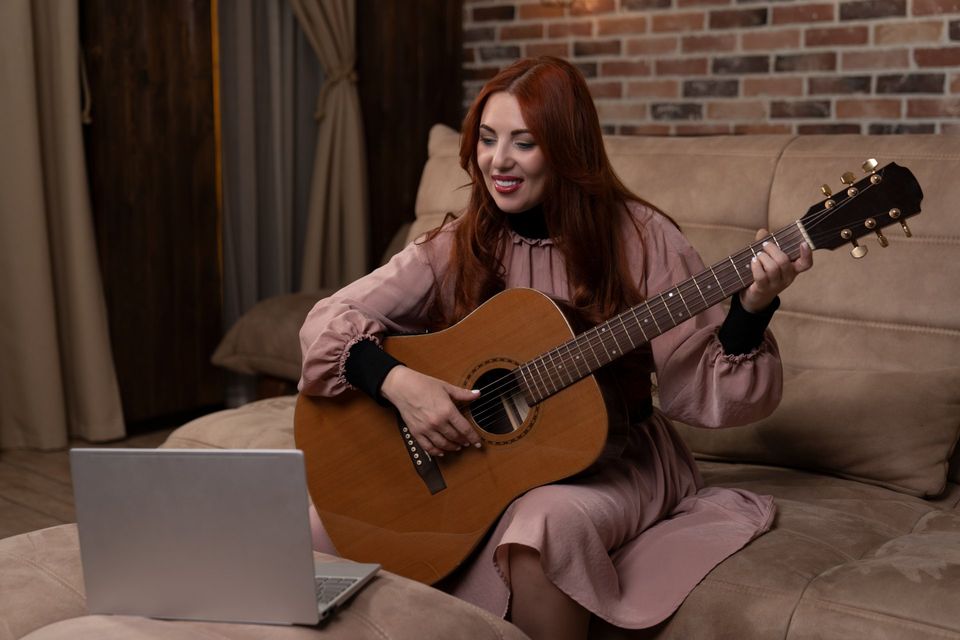
Whether you teach a class of 30 students or private lessons, teaching virtually has been a challenge for all educators. Presenting information in a way students will understand that truly helps them learn has been the driving force behind lesson plans.
We all know that learning is so much more than absorbing information, especially for kids. What about building relationships with our students? What about the emotional connection you get from playing music together? What about the fun?
I’ve never met a kid that wants to stick with anything if it isn’t fun. And virtual lessons can be fun, too! Here are 10 ways to keep your students excited and engaged during your virtual lessons. Some are for younger students, some for older and some for all ages!
- Play Games
– Don’t just play any game, try and incorporate the piece your student is working on. For example, play freeze dance. You can play the song your student is learning, and they can dance along. Not only will they be having fun, but hearing the music played correctly will help their performance.
- Crack Some Jokes
– Why did the girl sit on the ladder to sing? She wanted to hit the high notes! Start each lesson off with a musical joke, and your students will be having fun right from the start.
- Keep Them Moving
– No one wants to sit still for an entire hour, so encourage some movement. Rhythm is a great way to do this! Clap, jump, hop, and even shimmy your way to mastering those fun beats. For older students, have them do exercises with you. Standing jumping jacks, stretches and even neck and hand exercises.
- Whiteboard Feature
– Did you know Zoom has a whiteboard? When you use the Share Screen option, you can select the whiteboard for live drawing. This is super helpful when explaining tricky subjects and keeping visual learners engaged.
- Share Screens
– Sharing your screen takes the lesson to a whole new level. You can create charts and graphics before the lesson to share with your students. And we know how much kids love YouTube! Find a great video of the piece they’re working on and watch it together.
- Send Gifts
– Just because you’re not together in person doesn’t mean you can’t drop a treat in the mail (kids LOVE mail)! Every once in a while, send a card, their favorite candy, or a themed book that your student would enjoy. It helps build that personal connection. You may even want to drop off (and leave outside) to their home a cookie with a note.
- Online Rewards
– There are a ton of virtual prizes that are readily available online. Virtual stickers, digital reward tags, eBooks, and coupons are a great way to show students instantly they’re doing a great job.
- Virtual Backgrounds
– Keep your students guessing with fun virtual backgrounds. Where will my teacher be this week? You can visit them from the beach, the desert, or even outer space!
- Get Flashy
– Never underestimate the fun of good old-fashioned flash cards. They can reinforce note names, rhythm, musical terms, and lots of other things! You can use any cards you have in your studio and hold them up to the camera or find digital versions online.
- Talk It Out – Now, more than ever, it’s important to have everyday conversations with your students. Ask them how school is going or what extracurricular activities they’re involved in. Take notes, and ask follow up questions during your next lesson. Don’t forget to share a story or two about yourself!
Even if you’re not seeing students in-person, there are plenty of ways to keep lessons engaging and fun. When a student feels you’re putting in the extra effort to get to know them and make virtual instruction enjoyable, they’ll be more likely to put in the effort on their end, too. You’ll see better practicing during the week and a positive attitude during lessons!
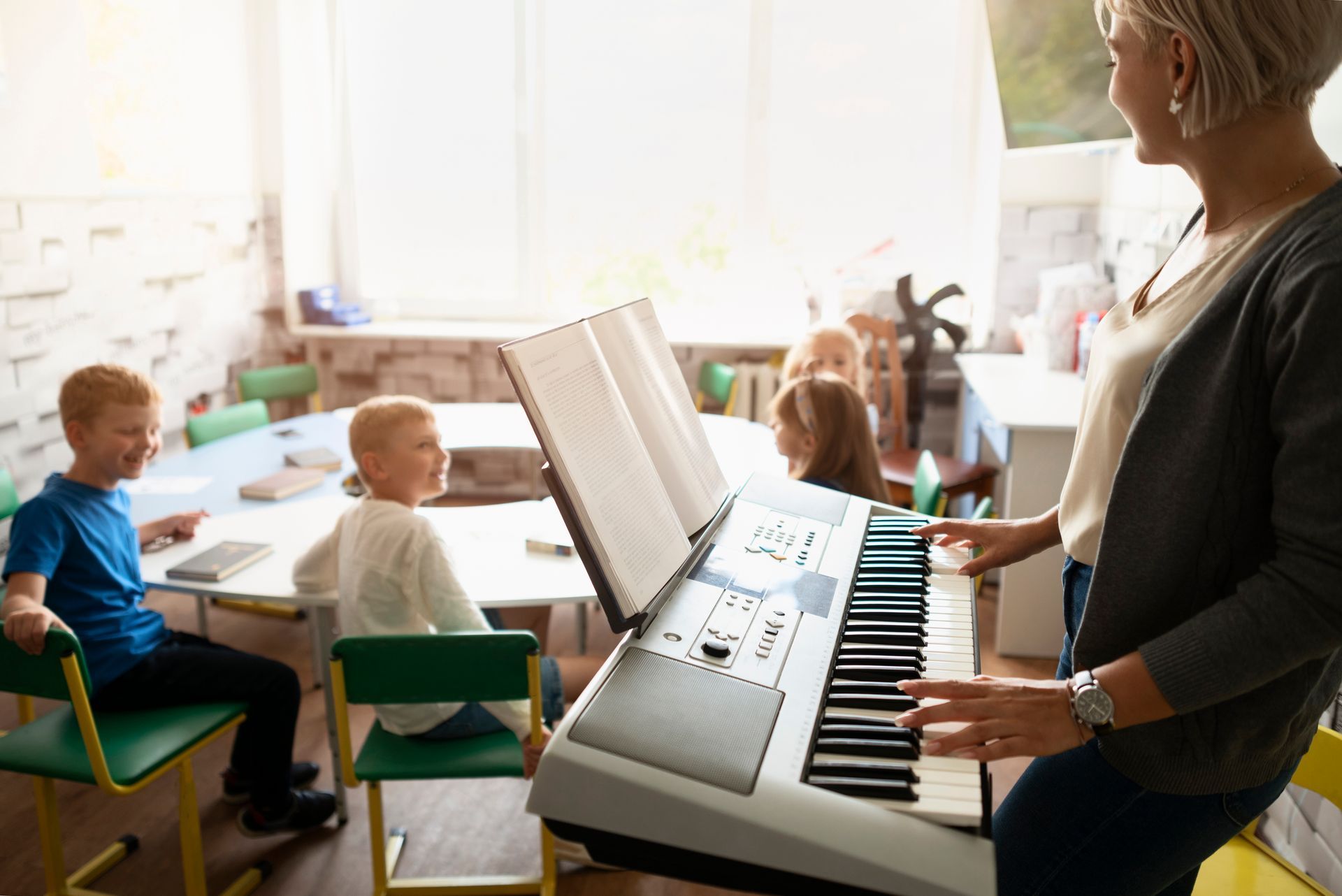
I'm thrilled to share an exciting new aspect of teaching philosophy that not only engages students but also brings the joy of learning to new heights – hosting piano parties as lessons! This concept was introduced to me through a colleague, Scott Matthew out of Fond du Lac, Wisconsin. He has started offering these "parties" as part of his lessons twice a year now for his students. These unforgettable musical experiences for your students, ranging from four-year-olds to high school prodigies are a perfect balance of learning and fun. Today, I invite you to step into this musical haven and explore the enchanting world of these piano parties. The Melodic Blend of Fun and Learning Imagine walking into a space buzzing with energy, laughter, and the sweet melodies of "Seven-up," "Fiddlesticks," and "Musical Adventures." These parties aren't just your ordinary get-togethers; they're vibrant learning experiences carefully designed to cater to different age groups and learning levels. From the youngest novices to the seasoned high school performers, each party should be tailored to ensure optimal engagement and growth. Party Repertoire that Dances through Learning These parties are orchestrated around a dynamic playlist featuring an array of engaging activities, seamlessly interwoven with musical concepts. Here is a glimpse of some of the highlights: Do-Re-Mi Bingo: This exciting twist on the classic bingo game encourages budding musicians to match notes with their corresponding pitches. It's a harmonious challenge that sharpens their listening skills while they revel in the thrill of the game. Classical Snap: A game of musical pairs that introduces students to iconic classical compositions. As they match melodies, they unknowingly deepen their understanding of musical styles and patterns. Symbol Lotto and Symbol Bingo: These interactive games transform musical symbols into intriguing puzzles. As your students hunt for the right symbols, they decode the language of music, fostering a strong foundation for reading sheet music. Notespeed - Primer: A musical race against the clock! Students compete to identify notes swiftly, enhancing their note recognition speed and accuracy. Telephone and Tapping: These games encourage collaboration and rhythm exploration. Students tap out intricate rhythms or convey musical phrases through whispers, honing their rhythmic precision and communication skills. Music Treasure Hunters: An adventurous musical scavenger hunt where students decode clues related to music theory and history, all while unraveling the mysteries of melody and harmony. The Rhythm of Time and Inclusion These parties are carefully curated to span 55 minutes, striking a perfect balance between education and entertainment. Regardless of age, students will be guided through a journey of discovery where the boundaries between learning and enjoyment blur into beautiful harmony. The age-appropriate content ensures that every participant gains something meaningful from the experience, enhancing their musical understanding and appreciation. By including these parties in your lessons, you're investing in experiences that shape students into lifelong lovers of music, encompassing both the technical skills and the magic of musical camaraderie. In a crescendo of excitement, piano parties harmoniously blend the worlds of music and celebration. Through these gatherings, you're not just teaching piano; you're composing memories and kindling a passion that will reverberate through every note played for years to come.

Prospective music students crave useful information and firsthand knowledge from others about a music teacher’s qualifications and expertise, which is why online reviews could be a game-changer for your private music lesson business. 5-star Google reviews and rave reviews on social media are a powerful driver of new business since many clients check online reviews before they visit a business or inquire further. Your students can verify your experience, credentials, reliability, and compare what others have to say before they commit to using your services. Digital town squares, such as Google and social media sites, are the primary forum where potential students and their parents will evaluate your private music lesson services and studio based on feedback from other, like-minded consumers. Young people are the most likely to go online for reviews, saying they trust online reviews more than personal recommendations. Music teachers who don’t have online reviews are missing an opportunity to grow their business. Acquire and share outstanding online reviews that sing your praises. The importance of Google and social media reviews cannot be understated. Here are 5 reasons to be a glow-getter and score sensational, 5-star online reviews: 1. Credibility - Your music teacher business can build significant trust and credibility from a steady stream of positive reviews on Google and social media platforms. Ratings provide credibility SINCE they describe what you do, how you do it, and the value you bring to your students. Google is the most used and trusted search engine. People will pay attention to reviews on Google and good reviews improve brand trust. 2. Written in the Stars - 5-star ratings are an instantly recognizable symbol that resonates with people of all ages. Stars quickly communicate a message and signal to a potential client the high standard of your music lessons. If you have a 5-star rating, clients are far more likely to consider your services. These star ratings also help track overall customer satisfaction and hone in on what your target audience wants. 3. SEO - Google reviews are beneficial for search engine optimization. Reviews for businesses on Google play a meaningful role in Google’s search algorithm in deciding where your business shows up in relevant Google search results. If Google sees that you have good reviews, your website will be ranked higher in search engine results. Good reviews improve your digital relevance since online reviews are considered to be one of the key factors and gold standards when it comes to deciding which sites appear first. If you are a local business, the more positive reviews you have, the higher you are likely to rank on Google and that can drive more traffic to your site and social media platforms. 4. Rise Above the Noise - Thoughtful and comprehensive testimonials on Google and social media are a powerful way to increase the likelihood that potential students will choose you over other similar businesses. Online reviews are a marketing tool that help people narrow their choices in a world full of infinite possibilities. Music teachers who feature glowing reviews have a competitive advantage because those ratings illustrate your experience and knowledge. 5. Play a Starring Role in Online Reviews - Make it simple for clients to write a 5-star review by sending a personalized note and providing a link to your Google page and social media platforms. Publicize rave reviews, with permission, across your marketing assets (e.g., social media, Facebook, Instagram, your newsletter, and website). Put effort into acquiring them, encourage positive reviews, and thank clients for a good review to show you are grateful for their business. If there is a negative review, respond in a productive manner to demonstrate your willingness to make things right. Encouraging students to review your company is an easy way to expand your brand’s reach. Online reviews make you and your business much more visible. Consider offering an extra 15 minutes to a one-time lesson if they write a review or a 10% discount for a month of lessons. So how do you get reviews? First off, make sure you have a Google My Business page. It’s totally free and you can set one up here. https://www.google.com/business/ Fill out the pages completely with lots of info about your business. Once your page is complete and published, invite your students or their parents to review you. You can find the link right to your reviews in your Google My Business panel. Make it a habit of inviting feedback every week so your reviews grow organically. Be sure to respond to every review as well! On Facebook be sure to enable reviews for your page. How? Click settings, privacy, page and tagging, and enable the button “Allow others to view and leave reviews on your page.” That’s it. Invite your students/parents and again respond to all reviews. Superstar reviews on Google and social media will be music to the ears of prospective students. If you are a private music teacher, embrace online reviews and use them to your advantage. Word of mouth happens online now, and thanks to online reviews, private music teachers can drum up new business in an effective and efficient way.
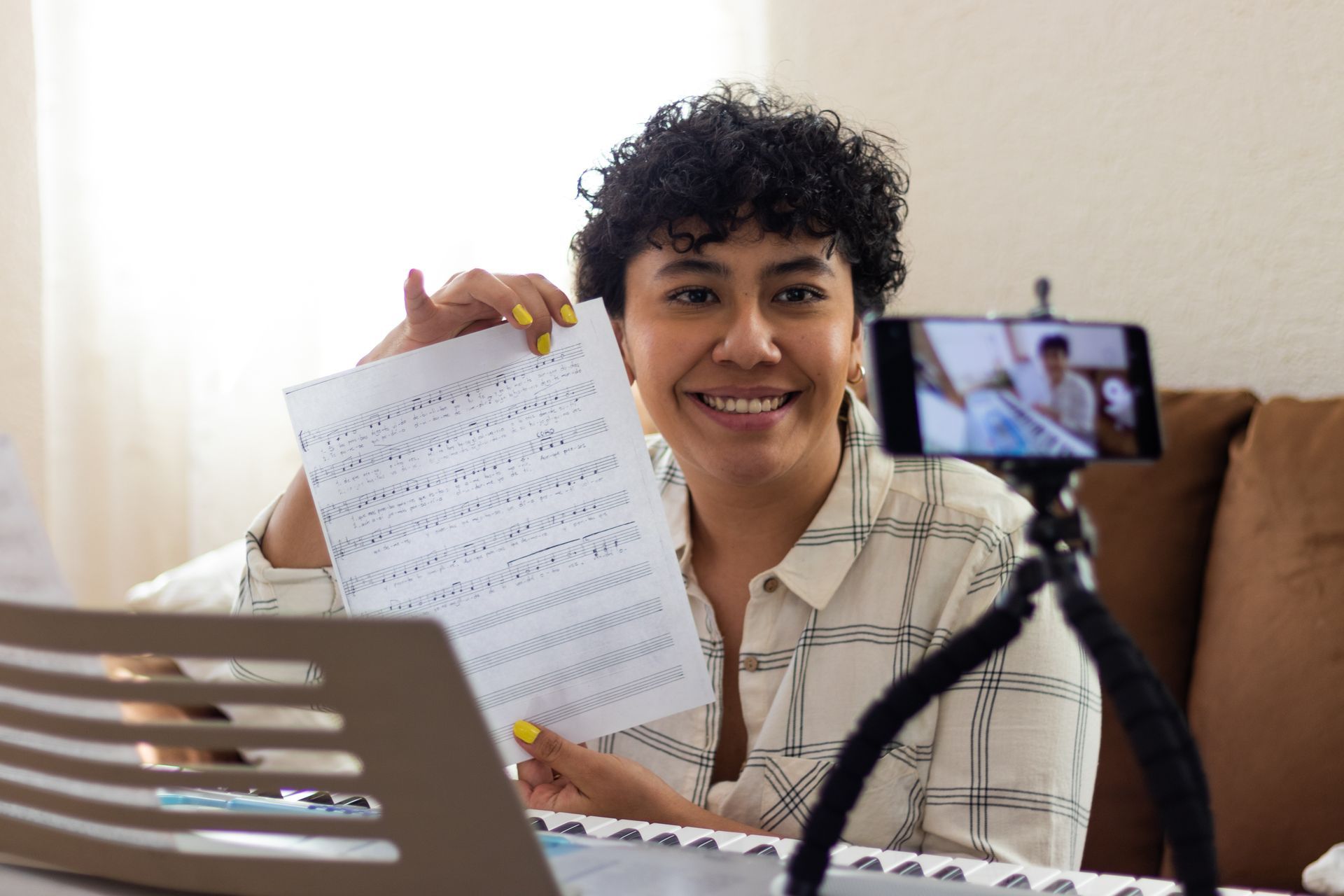
Incorporating TikTok into the digital classroom can be a game-changer for private music teachers. The popular video-sharing platform has an estimated 1 billion active users worldwide so it’s no surprise music educators are leveraging the platform to reach students and prospective students. The social media app expertly exemplifies Mr. Estrada’s precept of meeting students where they are and tailoring teaching along with lesson plans to embrace and enhance one’s role as educator.
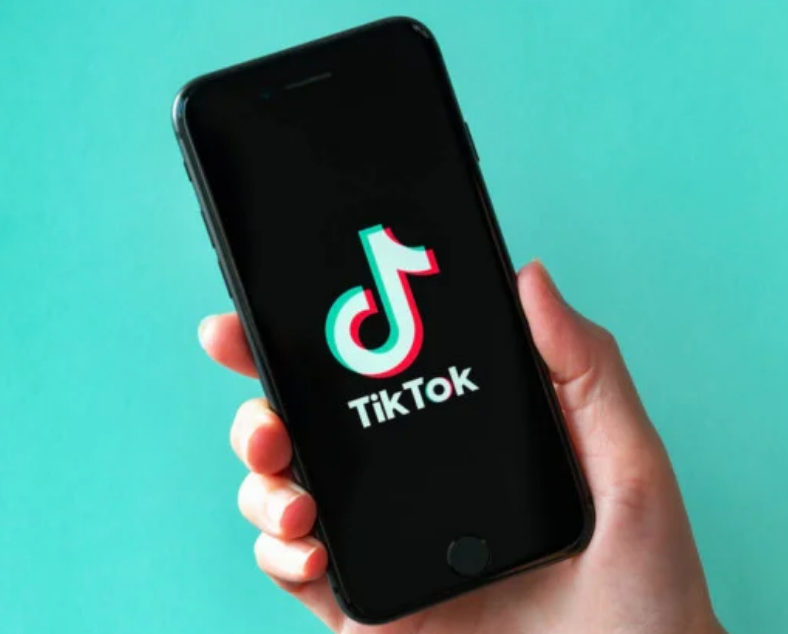
Lights, Camera, Action! Music educators around the globe may want to incorporate the highly popular social media platform TikTok into their lesson plans. The whole system of communication in private music education has evolved. Visibility and reachability have exponentially increased with new technologies, especially TikTok, which is a video-sharing platform that has an estimated 1 billion active users worldwide.

Private music teachers are determined to turn up the volume when it comes to increasing accessibility and availability to music education. Traditional music education programs are either losing funding or music programs are frequently on the chopping block in public schools. But this problem is solvable. If we think more deeply about the profession we proudly call music education, we see the ways in which private music teachers can seamlessly bridge the gap and save music education. The research is clear that students of all ages and ability levels can benefit from music education. Music education has been closely associated with enhanced language skills, increased cognitive ability, a boost in creative thinking, and strengthened problem-solving skills. Private music teachers know the value of music education, and private lessons provide students with focused one-on-one time. Having a private lessons teacher to help answer specific questions or teach concepts students want to study is invaluable. With private lessons, there’s increased flexibility and personalization. COVID-19 created more opportunities for the use of technology in the course of private music education. It is important to encourage students to embrace the constant evolution of culture and technology. Technology paves the way for private music educators to focus on the topics that underlie the hardware and software in use today so students can learn to work with a wide range of programs, sequencing, recording and notation software, music mixing, computer-assisted learning, and synthesis. The music business is undergoing seismic technological and economic shifts. Private music educators should teach students to think not only as artists, but as entrepreneurs. The current times offer unprecedented potential for musicians to thrive as entrepreneurs. Private music educators can equip students to be high-level performers while also arming them with the entrepreneurial tools and business acumen they need to succeed in an evolving music business landscape. Variety is the spice of life, and diversifying a student’s appreciation for and understanding of different music genres is beneficial. Private music educators should continue to explore various ways of teaching a broad range of music genres, recognizing a blend of traditional and non-traditional pedagogies that engage learners. Encouraging students to learn different kinds of music styles can help aspiring musicians expand their horizons. Please don't alienate students by rejecting any style of music as illegitimate. Use original, modern, and varied genres of music rather than the outdated material often presented in method books. In a prior blog post, I wrote about how adults are one of the fastest-growing demographics of music students. Private music teachers can help save music education by embracing every age and ability level of their students. Adults are increasingly embracing musicianship late in life and they are making music education a priority. There are many ways for your students to take what they learn in private lessons and share it with their community through music making events. This will further their music education by creating an open, inclusive, and diverse culture of “us” that treats music as a language to facilitate and foster a deeper sense of community. Talented music students are often able to take advantage of performance opportunities in the larger community. Performance represents an essential part of a student’s musical growth. Community engagement and performance fills an important role in your student’s music education. Music education can not just survive but thrive with the help of private music teachers.

In this day and age, there are many teaching options for your Private Music Studio. Whether it’s seeing students in your home, a studio setting, or virtually, there are many pros and cons to each scenario. Knowing the benefits and roadblocks beforehand can help you navigate pricing and scheduling, and even which environment is best for you and your students. Let’s explore the option of traveling to students’ homes to teach. While private instructors can typically charge more money for this convenience, it doesn’t come without considering a few different factors. If you do your prep work correctly, it can be a great way to run your business. Benefits: As I previously stated, people will typically pay more money for you to come to them. It’s a big time saver on their part, and if they have multiple children’s schedules to manage, they don’t have to worry about things like childcare and dinnertime. A perk to traveling to piano students’ homes, is that the lesson happens on the same instrument they practice on, which can ease confusion when they’re practicing. Plus, you're saving the parents' (who both work) time and money. Pricing: When quoting prices for lessons where you’re traveling, ALWAYS consider travel time, gas and insurance and you need charge for it. If some of your lessons are more than 30 minutes away, you may want to charge even more. A good rule of thumb is to not charge for travel time that is less than 15 minutes, but once you start to go over, charge a portion of your lesson rate. Also, take cancellations into account. Think about having a 24-hour cancellation policy. There’s nothing worse than driving all the way to a student’s home and discovering they forgot to cancel. Location: It will save you time and money to map out your travel schedule according to your location. Perhaps schedule all of your students in one town on one day. And remember, some towns can be pretty large, so map out the exact locations. You will want to travel to each student in order of distance. Your map should never look like a pinball machine! How far you want to travel is up to you, but always remember time is money. Supplies: Keeping all of your supplies organized and replenished will not only save you from headaches but will also keep your lessons running smoothly. I recommend having either a small rolling suitcase or portable file container that’s easy to transport to lessons. At the beginning of each week, check your inventory and make sure you have everything you need. If one of your supplies needs to be replaced during the week, take note and don’t delay! Always carry items like staff paper, pencils, books, flashcards, extra strings, repair tools, or anything else you might need during the lesson. Environment: When teaching lessons in students’ homes, the biggest challenge is the home environment. Insist on having a quiet, clutter and distraction-free space for your lessons. Many teachers like to stop in and meet students in their homes. This is the perfect time to ask to see their lesson space. If you see things aren’t quite adequate, make a few kind suggestions to make things more productive. Also, make it very clear that while parents are welcomed to watch, younger siblings are often distracting and should be kept occupied during the lesson. You May even wish to have a separate 'Travel Policy' sheet. What can go wrong? While there is always a margin for error, lessons in a student’s home should run smoothly if you do the proper prep work. Make sure you’re prepared will all the supplies you might need (plus a few extras). And speak with your students or their parents to make sure your expectations for the lesson environment are clear. Otherwise, enjoy your students’ smiling faces each time you arrive at their door!
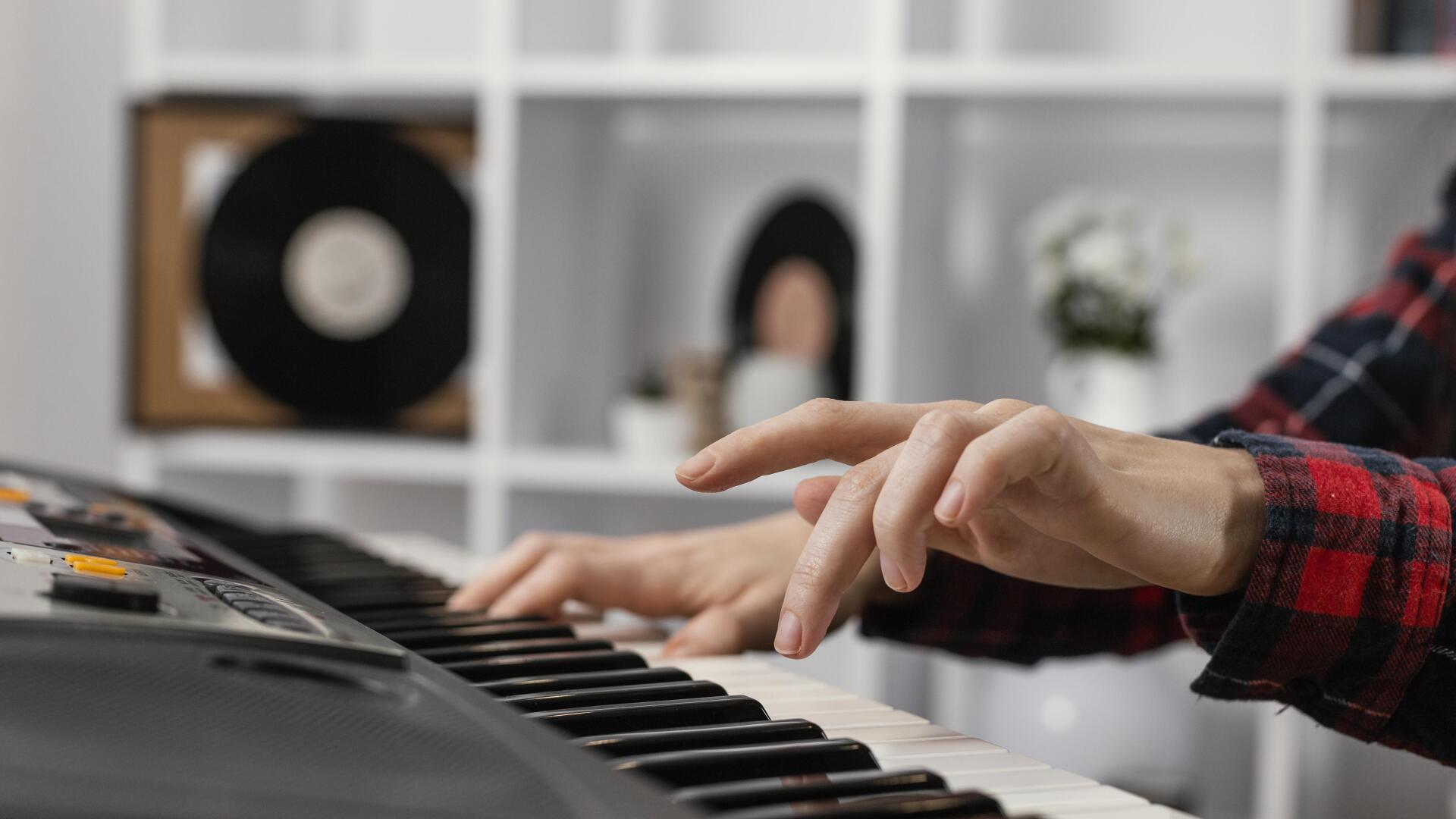
Adults are one of the fastest-growing demographics of music students, and they have their own learning styles, life experiences, capabilities, goals, and interests that shoul d be absorbed into their music education. Teaching an adult learner can be highly enjoyable and deeply enriching but there is a unique pedagogy in teaching adults versus children. What adjustments do you need to make in your approach to teaching adults as opposed to children? Music is one of the most effective ways to learn a new skill and hone an artistic talent. It is important to start with attainable practice and performance goals, and don’t be afraid to adjust them as you go along. All methodologies should be flexible and individualized for adult learners. Adults have a different style of assimilating new knowledge, and music is not a one-size-fits-all art. Knowing how to develop a curriculum appropriate to the adult learner will make lessons more effective, interesting, and successful for both the student and the teacher. In fact, building a foundation of formality while maintaining transparency can set both the adult learner and their teacher on a path towards boundless achievement. With adults, it is advisable to set boundaries from the beginning. For example, be clear and consistent about what the adult student should call you. While adults tend to want to have more input than a child about what they’re being taught and the pace of their learning, as the professional music teacher, you are in the best position to assess ability and create a realistic lesson plan for the adult learner. You will want to share your love of music with students of all ages and experience levels, and they are relying on your wisdom and expertise to help guide them. Teachers are in the best position to encourage continuous music education and learning. Adult learners may also wish to share more with you in between lessons, such as musical videos or recordings and themselves playing. Many adults have a musical past that can help inform their teachers about why they want to learn music now. Some adults feared learning a musical instrument because of a negative childhood experience that was embarrassing or discouraging. Is it a situation where they were told by adults then that they would not succeed? Other adult students perhaps never got the chance to play music as a child due to their family’s financial constraints or because music was under-appreciated at home. Recognize an adult’s experience with music as a starting point to help them achieve their goals. Once you understand your adult student’s musical past, that can help you build appropriate lesson plans and make them feel safe and supported in the present. Adult students can understand complex technical concepts, and they are more apt to pick up on the patterns and form of the music, which makes for a more meaningful, high-quality teaching experience. Adult students have been exposed to more life experiences and different forms of music, so they have a diverse and richer repertoire of musical styles to draw from, which is especially enjoyable for the teacher. They can usually understand music theory better in a shorter period of time and may even have better muscle control compared to children. This will of course depend on their age. Therefore, it is important that technical skills be introduced earlier to them. Older adults often need more reminders. Practice makes perfect, but unlike children who may not have a choice about studying or practicing music, if adults don’t make consistent progress, they may quit. Are they the kind of person who expects goals quickly and are they impatient? Consider how you can tailor your lessons to include an adult learners’ time constraints and how their schedules might impact the practice and study of music. While adult learners have longer attention spans than children to work on honing their craft, their schedules are busier. They juggle work, errands, volunteering, and time with family and friends so their practice and lesson schedules may be inconsistent, which takes more patience on your end. Weekly lessons and daily practice may be more erratic with them, which is why as long as the student is being reasonable, you should be, too. Adult learners who never studied music may need guidance in understanding the importance of regular practice, and how to practice effectively. Chances are, adult students have been out of school for awhile, and they may need help learning how to flex their music practicing muscles! Adults may challenge their music instructors in ways children do not, requiring a more comprehensive explanation of concepts during each lesson and will need logical clarification. Music instructors teaching adults need to know how hard to push them, how to answer their questions, and how to get them to the next level. Adult learners tend to struggle with a level of self-consciousness that young students don’t necessarily possess to the same degree. Adults may be more disciplined at setting goals than children, and in turn, are more motivated and driven to succeed. Since they’re paying for lessons themselves, the level of dedication is often higher, increasing the likelihood that they will attain or exceed their own expectations and benchmarks. However, don’t forget to enforce your payment and lessons policies with adult students. There is no shortcut to success in teaching music to adult learners. Perseverance, effort, patience, and commitment are needed by both the teacher and the student to maximize success and satisfaction. During the learning process, it is normal for adult students to face obstacles, some of which are described above. Don’t forget they often need more compliments with follow-ups !!
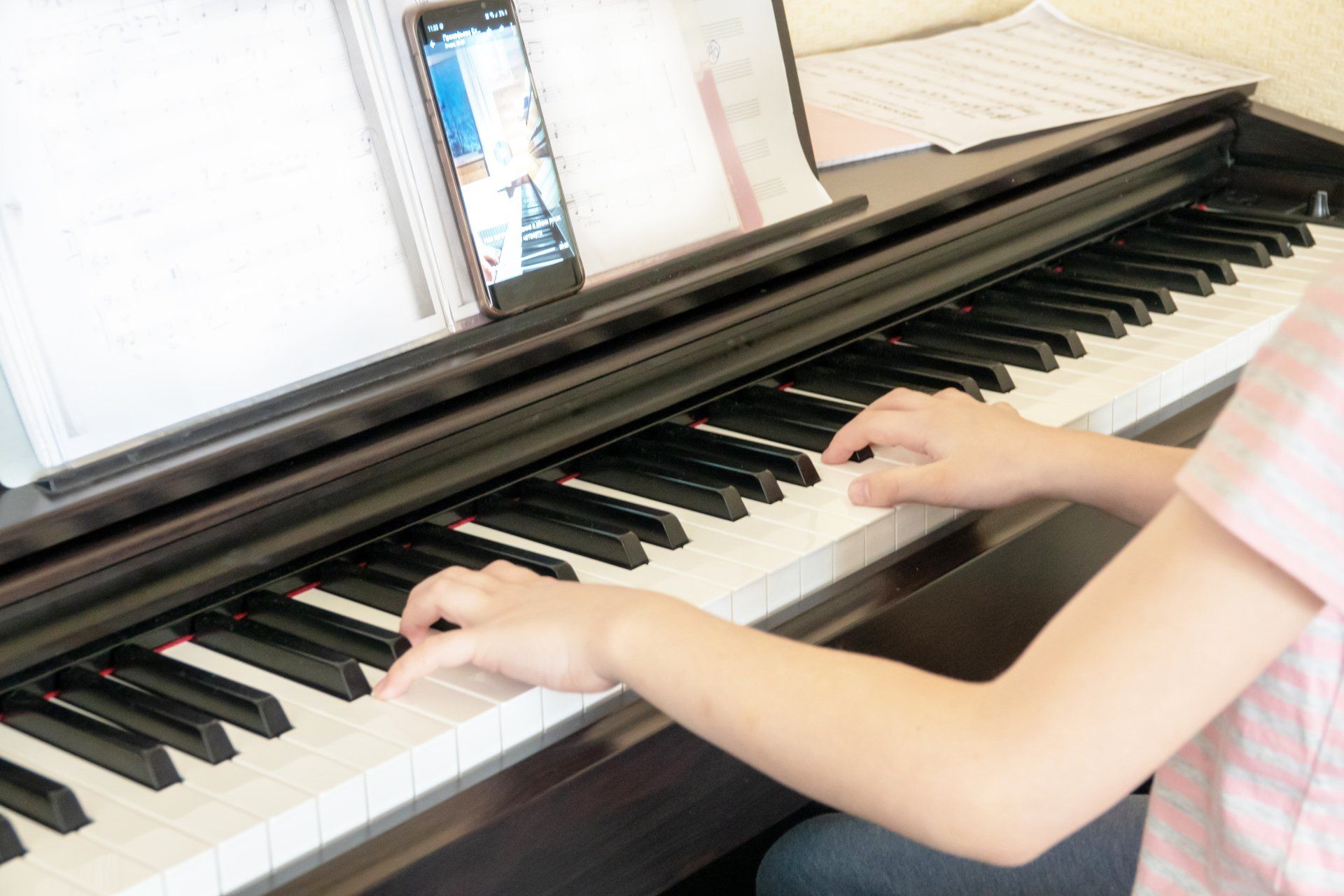
The world has gone virtual, and that includes music teachers. With so many programs to choose from, making this shift from in-person instruction to virtual can be overwhelming. But some options can make your life easier. We all know about communicating on Zoom and online payment software like PayPal. Those are the basics! We're talking about other online tools. Private music studio teachers of today need studio management or simple transposing assistance. Most of all, these tools need to be quick and painless to learn. After all, we want to spend our time playing and teaching, not toiling over our computers! In my latest book, Your Next-Gen Private Music Studio , some of my most trusted colleagues have shared with me the favorites that they use daily for virtual teaching. Here are some picks from the top of their list: 1. GarageBand – It gives you a full music studio, including an extensive sound library. You can record, add tracks, and saves files in GarageBand (it’s free!). This is useful for teachers in so many ways. You can play past files for students to hear the difference in their playing level from former years, which can help determine what to focus on in the future. With GarageBand, you can... • Add unlimited tracks • Record, edit and save files • Create separate files for each student to record their tracks 2. Finale – It’s music notation software that has become an industry standard. Make your scores look beautiful and share them with others! Teachers can use Finale to write exercises and takes excerpts from various method books, making it easy to customize music for their students. With Finale, you can... • Transpose • Format • Enlarge music for students with impaired vision • Print, format PDF files, and email to students • Create a MIDI file as background accompaniment 3. SmartMusic – This is a repertoire library of exercises and music education tools to help your students learn more effectively. Create your own library so students can browse and play along with it. It only costs $40 per year and $5 per student for access. SmartMusic has an online student practice log and monitors their time. Plus, all of the files can be played back. With SmartMusic, you can... • Access a teacher’s sheet music library remotely • View online practice log • Monitor time right on the site • Played files on repeat 4. Audacity – No Mac? No problem! Audacity is an audio editor and recorder for Windows, Mac, Linux, and other operating systems. Teachers like to upload a tune to Audacity to control tempo for the student’s needs. It gives you a remarkable ability to customize music for both private lessons and performance. With Audacity, you can… • Record live audio • Import, edit and combine sound files • Convert samples • Plug-in friendly 5. MyMusicStaff – It’s everything you need to manage your Private Music Studio business. Automate everything to save you hours of time and never miss anything. Have peace of mind that your business is running smoothly, so all you have to do is teach. With MyMusicStaff, you can… • Manage your website • Organize student contact information • Scheduling • Invoicing Learning new software for your Private Music Studio doesn’t have to be complicated. You may love these tools so much; you’ll have a hard time remembering how you taught without them. Another bonus, since kids are so advanced in technology, they’ll be extra engaged!
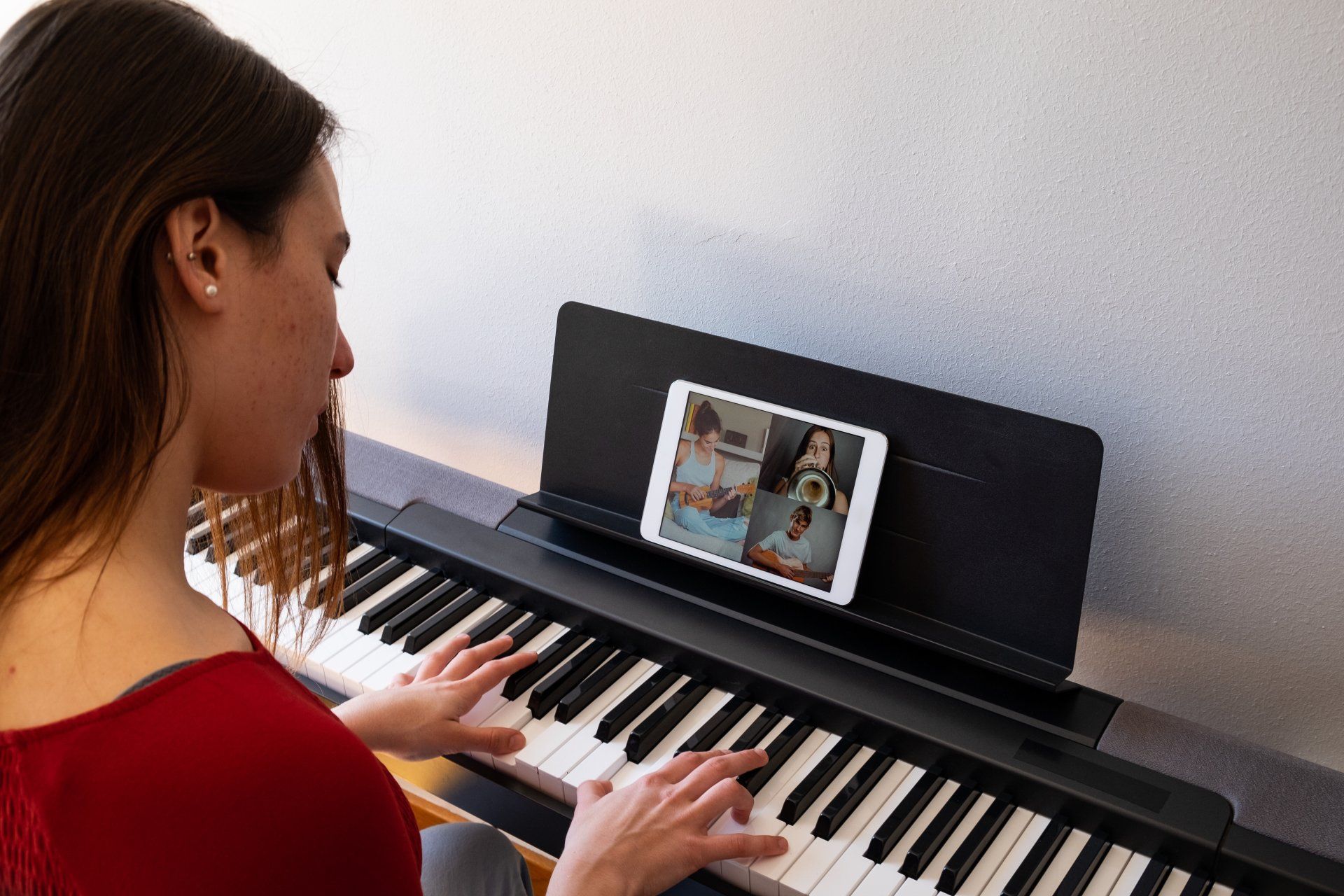
It's going pretty well on Zoom - most problems are on the students' end if they have spotty Wi-Fi. Here are some ways I've found to help parents stay comfortable with the format: 1. I space students at least 20 minutes apart, so if there are connectivity issues the students still get the full-length lesson. 2. If there's an instrument problem (especially with young students), they can bring the cello to my house. I'll work on it outdoors and the student and parent can wait in the car while we chat with their windows down. I IMMEDIATELY put my shoes in the "contagion containment zone" for disinfection later, then go back in and put my clothes in the wash and jump into the shower. 3. I e-mail the parents regularly to let them know what we're working on, what kind of progress to expect, and how to help their student when they get "stuck." 4. Students and parents know that they can e-mail or text me between lessons if they need help. This is extra-useful for the ones who are in online intensives and need coaching in music theory. 5. I'm in contact with their school and youth orchestra directors to make certain that we're all on track. Yes, this is all extra, unpaid work, but we can't put a price on helping our students when the world has gone pear-shaped. Janet Paderewski Lattanzi, TX

Cell phones have likely been the bane of all teachers’ existence since their inception. Kids sneaking them into class and causing a distraction adds a level of difficulty to managing a classroom that didn’t exist years ago. Not to mention the distraction they cause when you’re supposed to be doing something focused like practicing your instrument. Let me just check Facebook for a second… But are they really all bad? The ability to look up information and take videos of your students while you’re teaching can be a great asset. Am I actually suggesting that a cell phone could be a GREAT tool to use during a lesson? YES! 1. Metronome Apps: Who needs an old-fashioned wind-up pendulum metronome? They were never perfectly accurate anyway. There are so many great metronome apps with a ton of helpful features. Programable rhythms, customizable screens, syncing, volume control, subdivisions, and polyrhythms are just some of the bells and whistles these apps have. Some are even geared towards specific instruments. 2. Video: Does a student keep using poor hand position? Record them in action so they can watch it back for easier and faster correction. This can be a real gamechanger when students are preparing for recitals and auditions. It’s impossible to have complete self-awareness when playing, and watching yourself on video can help correct everything from body position to even tempo. 3. YouTube: Want to hear a professional play the piece your student is working on? You can probably find 10 within minutes. This can be helpful when choosing new repertoire and getting kids excited about pieces they’re currently playing. If a student is having trouble capturing the feel of a song, hearing several different performances can help tremendously with interpretation. 4. Amazon: Teachers have a lot going on, so it’s easy to forget things. Does your student need a new book? Rather than forgetting week after week, you can order it within seconds on Amazon and cross one task off your list. Is one of your students just dying to play a piano arrangement from the latest movie? Do a quick scroll and see if it’s available. 5. Internet: What year did Mozart die? Where was Bach born? What are the requirements for auditioning for college? Is a musical term escaping your memory? Do a Google search during the lesson and you’ll have all the answers you need. Years ago, teachers would have rows of books lined up in their studios so they could look up information when a student had a question. It was always an issue for traveling teachers since it’s impossible to carry all those reference books to each lesson. Now, everything you need is in the palm of your hand. Just think about all of the bulky equipment a simple iPhone has replaced. You no longer need a metronome, video camera, computer, television, or endless volumes of books. Since all these tools are at your fingertips, you’re much more likely to use them. Embrace your phone and you’ll find it’s one of the most essential tools you can use in teaching.
